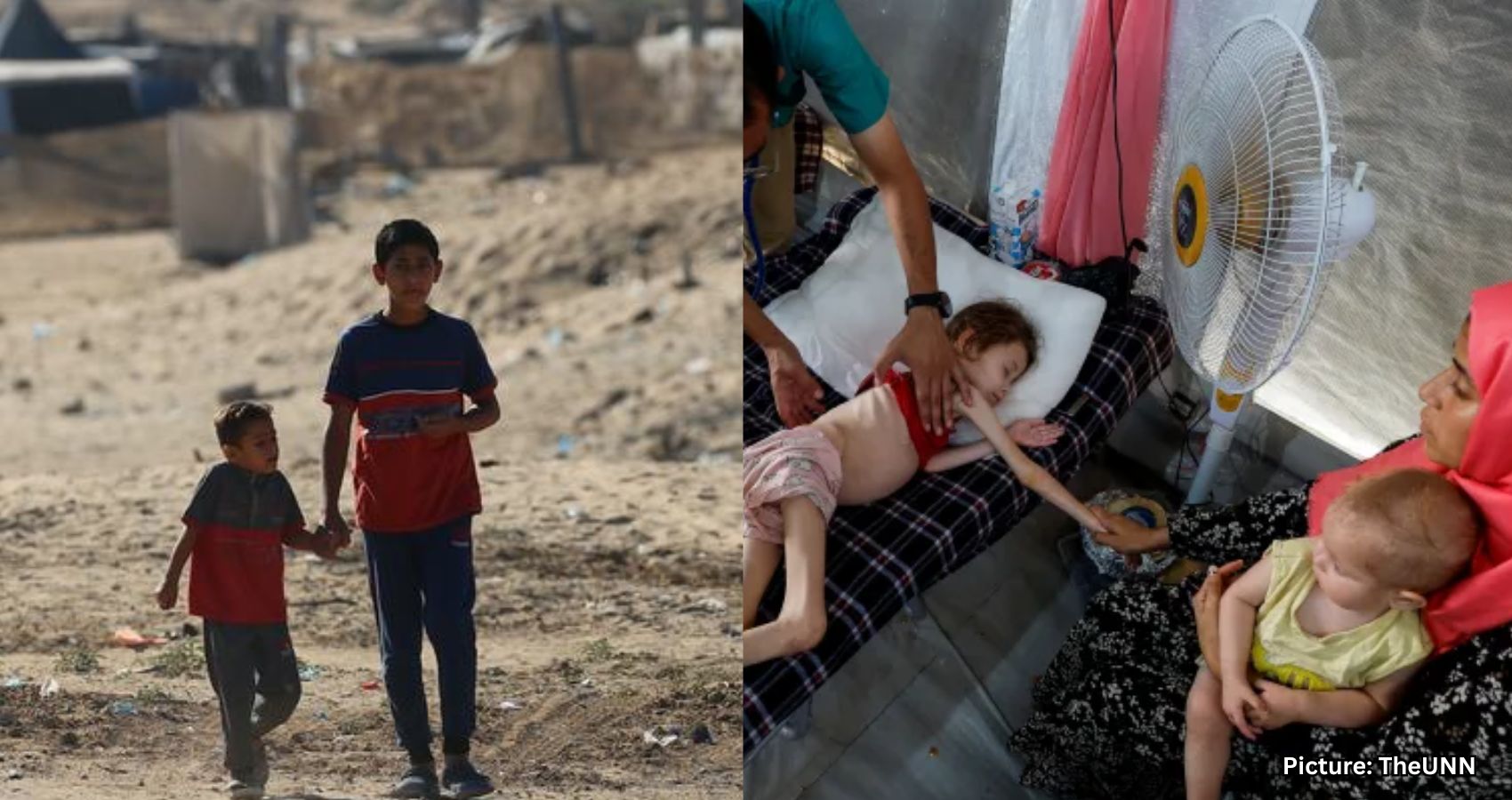UNICEF warns that nowhere in Gaza is safe for children as the humanitarian crisis deepens amid ongoing conflict, with millions facing starvation and malnutrition.
UNICEF has issued a stark warning that nowhere in Gaza is safe for children, highlighting the dire situation amid the ongoing conflict between Israel and Palestine. A recent report indicates that over 60,000 people have died in Gaza since the conflict escalated, including 18,592 children and 9,782 women. The humanitarian crisis has reached alarming levels, with 90 percent of the population displaced due to the longest blockade in the region’s history.
International humanitarian organizations have raised concerns that Israel’s siege and blockades have pushed approximately 2 million people in Gaza to the brink of famine. During a briefing hosted by American Community Media on August 8, experts called for urgent international intervention to prevent catastrophic levels of hunger and starvation, emphasizing the moral imperative to provide aid to Gaza’s children.
The panel featured prominent voices, including Alex de Waal, Executive Director of the World Peace Foundation at Tufts University; Budour Hassan, a researcher with Amnesty International focusing on Israel and Palestine; and Afeef Nessouli, a journalist and aid worker who recently volunteered in Gaza.
The roots of Gaza’s crisis can be traced back to the military blockades imposed by Israel following the October 7 attack on civilians by Hamas in 2023. Prior to this escalation, Dr. de Waal noted that the population’s nutrition and health status were relatively stable, with high vaccination rates and health coverage. However, the blockade has left Gazans entirely dependent on supplies of food, medicine, water, and fuel controlled by Israel.
The military campaign that ensued in October 2023 resulted in the destruction of essential infrastructure, leading to mass displacement and the breakdown of Gaza’s social fabric. According to de Waal, international law defines indispensable objects for survival as including food, water, sanitation, housing, and medical care. The air and land assaults have forced many to evacuate their homes, leading to overcrowded shelters.
Data from the World Food Program reveals that more than 500,000 people, nearly a quarter of Gaza’s population, are experiencing famine-like conditions. The Integrated Food Security Phase Classification (IPC), a UN early warning system, indicates that two out of three famine thresholds have been breached in parts of the territory.
De Waal explained that the IPC draws on various data types, including food security, child malnutrition, and evidence of excess deaths. The situation has deteriorated significantly, with the population nearing famine levels by late 2024. He also noted that the Gaza Humanitarian Foundation’s aid sites have become dangerous, leading to fatalities among those seeking food. The Israeli military has attributed food shortages to theft by Hamas and armed groups, leaving vulnerable Gazans without adequate supplies.
Afeef Nessouli, who spent nine weeks volunteering in Gaza, described the humanitarian aid sites as disorganized “deathtraps” that have replaced community kitchens that once provided hot meals. He recounted visiting a community kitchen that had shut down, leaving only potatoes for sustenance. Nessouli criticized the aid strategy as ineffective, stating it has caused more suffering than relief.
As Israel continues to restrict humanitarian aid, Gazans face severe shortages of food and medical supplies. De Waal warned that the poorest segments of the population are at the greatest risk, particularly as the number of starving children rises daily. The situation is exacerbated by the ongoing blockade, which has persisted long before the recent conflict.
Amnesty International’s Hassan reported that the humanitarian crisis in Gaza has been decades in the making, with severe restrictions on food and medical supplies leading to widespread starvation. A December 2024 report from Amnesty described Israel’s actions as genocidal, citing the deliberate destruction of living conditions and the infliction of physical and mental harm on Palestinians.
Hassan highlighted the “flour massacres,” where desperate crowds surged to receive limited food supplies, resulting in chaos and fatalities. The blockade has not only restricted food access but has also devastated Gaza’s social fabric, with traditional community support systems breaking down under the pressure of survival.
As the conflict escalated in March 2024, hospitals became overcrowded with casualties, and reports of starvation among infants emerged. Families were forced to abandon their homes, leaving behind sources of food and medical supplies. The situation has led to a sense of dehumanization among the population, with many feeling that their humanity is overlooked by the world.
UNICEF has called for increased humanitarian and commercial traffic into Gaza to combat the rising death toll from starvation and conflict. Cindy McCain, Executive Director of the World Food Programme, emphasized the urgent need for large-scale food aid to prevent mass starvation.
De Waal, while condemning Hamas’ actions, questioned why the civilian population of Gaza should bear the consequences. He urged for transparency and access for journalists to report on the humanitarian crisis, asserting that the United Nations has the capacity to provide aid that is currently being obstructed.
The people of Gaza are facing unprecedented challenges, with a breakdown of social cohesion and a lack of essential resources. De Waal underscored the importance of recognizing the humanity of those affected, stating that the true measure of a society is how it treats its most vulnerable members.
As the humanitarian crisis deepens, the plight of Gaza’s children remains a pressing concern, with UNICEF reporting that over 320,000 children are at risk of acute malnutrition. The international community must act swiftly to address the urgent needs of the population and prevent further suffering.
Source: Original article

